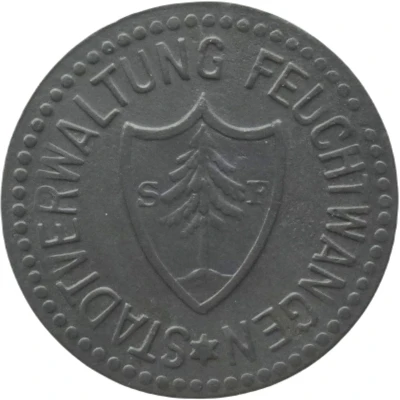


© Willem63 (CC BY-NC-SA)
10 Pfennigs - Feuchtwangen
1917 year| Zinc | 2.88 g | 23 mm |
| Issuer | City of Feuchtwangen (Federal state of Bavaria) |
|---|---|
| Emperor | William II (Wilhelm II) (1888-1918) |
| Type | Standard circulation coin |
| Year | 1917 |
| Value | 10 Pfennigs (10 Pfennige) (0.10) |
| Currency | Mark (1914-1924) |
| Composition | Zinc |
| Weight | 2.88 g |
| Diameter | 23 mm |
| Thickness | 1.0 mm |
| Shape | Round |
| Technique | Milled |
| Orientation | Medal alignment ↑↑ |
| Demonetized | Yes |
| Updated | 2024-10-04 |
| Numista | N#65362 |
|---|---|
| Rarity index | 73% |
Reverse
Pearl rim, legend and date surrounding pearl circle with denomination centered.
Script: Latin
Lettering:
KRIEGSGELD
10
✿ ✿ 1917 ✿ ✿
Edge
Plain
Comment
Issuing authority: [Stadt, Bayern]Interesting fact
The 10 Pfennigs coin from Feuchtwangen, issued in 1917, is interesting because it was made of zinc, which was a unusual choice of material for coins at that time. Most coins were made of metals like silver, gold, or copper, but the use of zinc in this case was likely due to the wartime economic conditions and the need for alternative materials. This coin is a unique example of how the scarcity of resources during World War I led to innovative solutions in coin production.



